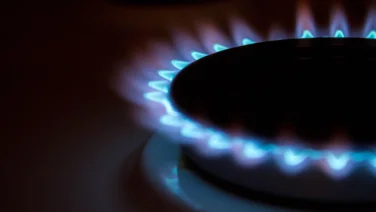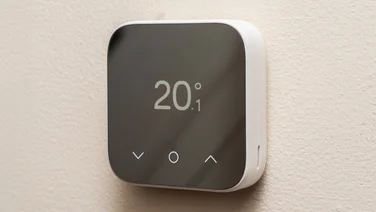To help us provide you with free impartial advice, we may earn a commission if you buy through links on our site. Learn more
- Get a free quote for solar panel installation today
- What types of solar panels don't need planning permission?
- What types of solar panels DO need planning permission?
- Do I need planning permission for solar panels in my garden?
- Do I need planning permission for solar roof tiles?
- Do I need my landlord's permission for solar panels?
- How do I get planning permission for solar panels?
- What does it cost to apply for planning permission?
- How long does it take to be granted planning permission?

Fitting solar panels can increase the value of your property, while also powering your home with free, renewable electricity for decades to come. It sounds like a win-win, but should you be seeking permission from your local council before you go ahead?
The majority of homes in the UK won’t require planning permission for solar panels, so chances are you won’t receive a censorious letter from the council once they’re in place on your roof. However, there are exceptions: for example, if you live in a listed building, or if you have a flat roof and need to install special frames to angle the panels towards the sun, then you’ll need planning permission.
Rules can vary between local authorities too, so if you’re thinking of installing panels then it would be wise to first check the Planning Portal website, which covers England and Wales, or MyGov.scot for Scotland.
If you think you’ll need planning permission and want to apply, you can skip to the bottom of this article for links and details. To find out more about the types of solar panels that do and don’t need planning consent in the UK, read on.
Get a free quote for solar panel installation today
Take our quick survey below and we’ll put you in touch with a suitable supplier near you.
What types of solar panels don’t need planning permission?
Solar panels that are mounted on a roof at the same angle as the roof itself (even if it’s a flat roof), usually fall under “permitted development” in UK planning law, which means they won’t require planning permission. This applies to most solar panel installations carried out in the UK.However, there are important planning regulations that still apply to all solar installations, including those that require permission in particular. You and your installer will need to bear these regulations in mind:
- Panels should be positioned to minimise the effect on the appearance of the building and the area;
- Panels must be removed when they’re no longer needed to generate energy.
READ NEXT: How do solar panels work?
What types of solar panels DO need planning permission?
Today’s solar panels are versatile enough to work on the more unusual types of roofs, including flat roofs, as well as very old or very delicate roofs. However, installing solar panels on these unusual roofs often requires planning permission, and this can add to the cost and hassle of having them installed.
You’ll need to apply for planning permission to install solar panels on:
A flat roof – If your installer uses a frame to mount panels at an angle that makes them protrude more than 0.2 metres above your flat roof, you’ll need to seek permission.

This will be the case with most flat-roof installations because, for solar panels to capture the optimal amount of light, they need to be angled around 35 degrees from the horizontal. You don’t need planning permission for completely flat panels installed horizontally on a flat roof, but these are unlikely to be as effective.
A listed building – This applies no matter the pitch of the roof. First, you’ll need Listed Building Consent from your local planning authority, and then you’ll need planning permission. Don’t do anything without first checking with your local authority’s conservation officer whether or not consent will be required for your panels. You can contact them via the Planning Portal website.
If you’re unsuccessful in gaining permission to install panels on your listed building, then your next step might be to seek permission to install them on the grounds – for example, in your garden, using a frame to angle them for maximum energy capture. More on that in a moment.
Any building in a conservation area, National Park or Area of Outstanding Natural Beauty (AONB) – In these cases, you’ll be much more likely to get permission if the panels won’t be visible from the road; for example, if the south-facing side of your roof faces your back garden.
Interested in getting solar panels installed?
Do I need planning permission for solar panels in my garden?
Standalone solar panels, which are mounted on frames that sit on the ground and angled for optimum sunlight capture, are a possible solution if you haven’t been granted permission to install panels on your roof, or if your roof is too fragile to support them.
However, they’re not always an option if you’re in a listed building or a conservation area. Here are the current UK planning rules on standalone panels:
- Panels should be at least 5m from the property’s boundaries – so you’ll need a very big garden indeed;
- Only one solar photovoltaic (PV) array is allowed, and it should be no bigger than 3 x 3 metres;
- Panels shouldn’t be installed within the boundary of a listed building;
- If panels are installed in a conservation area or World Heritage Site, they must not be visible from the main road.
The rules also state that ground-mounted panels should be no higher than 4 metres, but if you’re clever enough to find a 4-metre residential solar panel, you’re probably clever enough to evade planning regulators!READ NEXT: Our guide to solar panels on flat roofs
Do I need planning permission for solar roof tiles?
A new type of solar panel, solar roof tiles are designed to look just like regular roof tiles, and will fit flush to the body of your roof. They’re expensive, but they look fantastic – and are the perfect option for getting around the issue of planning permission if you live in a conservation area, National Park, or AONB.

However, you should note that you can’t install just any colour of roof tile on a listed building, so again you may be refused planning permission to install them. With solar roof tile installations costing around £20,000, we’d advise that you check the permitted status via the Planning Portal before you make a very expensive mistake.
Interested in getting solar panels installed?
Do I need my landlord’s permission for solar panels?
Yes, those living in rented accommodation, whether it’s a flat or a house, will need their landlord’s permission to install solar panels. Even if you live in a leasehold flat that you own, you’ll need to get permission from the freeholder or the management company that owns the building. You’d also be wise to seek consent from others who live in the building, although this isn’t a legal requirement.
One of the smartest solutions for those living in an apartment with a balcony is to install a portable plug-in solar panel in your outside space. Balcony solar panels don’t require you to obtain any permissions, you can usually set them up yourself, and you can take them with you when you move. While these types of panels aren’t particularly powerful, they can still help to reduce your electricity bill without the hassle of seeking anyone’s permission.
How do I get planning permission for solar panels?
If you’re thinking of getting panels installed and you live in England or Wales, start by checking the Planning Portal website – even if you believe you’ll be exempt from planning permission. If you’re in Scotland, head to MyGov.scot; or if in Northern Ireland, visit NIDirect. All of these sites will provide you with information on the rules set by your local authority, and then allow you to submit your application.
For more information about planning applications across the whole of the UK, head to the government’s guide on planning permission.
What does it cost to apply for planning permission?
Fees can vary between local authorities, but it’s likely to cost around £275 to submit a planning application. It’s free to apply for listed buildings consent, which will be your first step if you live in such a building.
To find out how much you’re likely to pay before you apply, use the Planning Portal’s online fee calculator. If you’re still unsure about the cost, get in touch with your local planning authority to ensure you submit the right fee with your application.
Interested in getting solar panels installed?
How long does it take to be granted planning permission?
Planning applications for solar panels are usually turned around within two months. Gaining listed building consent also takes around the same amount of time.
If you’re keen to fit solar panels, but are likely to need special permission to install them, you can use our free tool to receive custom quotes from local solar panel installers while you wait for your application to be approved.






